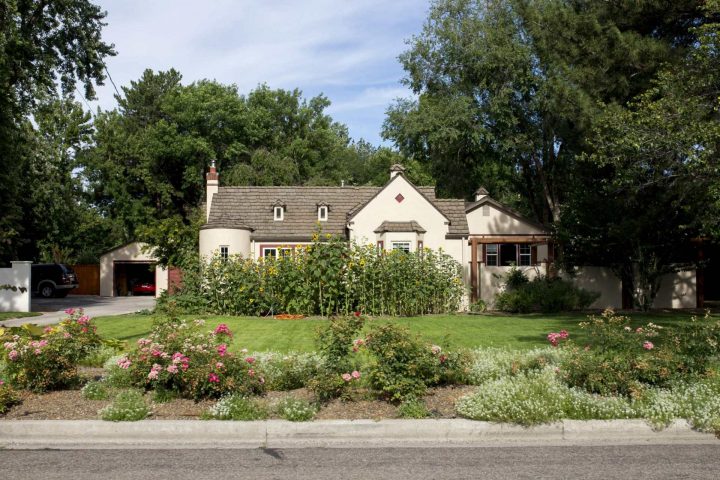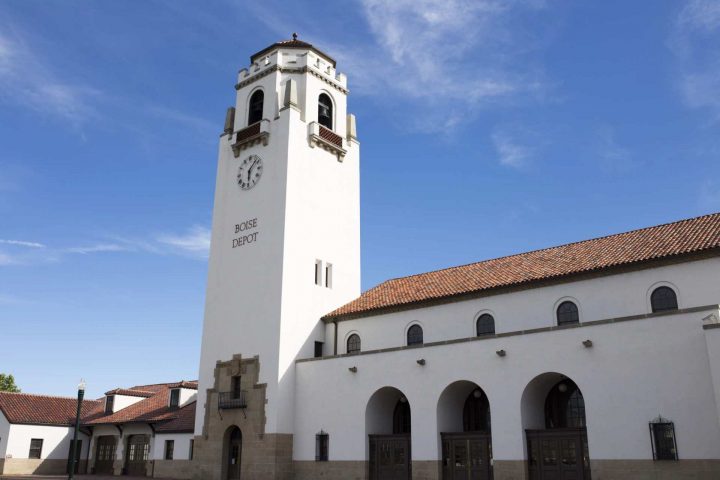The Boise Bench: A Historic and Vibrant Community
The Boise Bench isn’t just a neighborhood—it’s a chapter in Boise’s story. Known for **architectural diversity, mid-century charm, and tree-lined streets**, the Bench has steadily evolved into one of the city’s most dynamic and character-rich areas.
Locals appreciate its **mix of history, architecture, and accessibility**, while newcomers quickly realize what long-time residents have known all along: **the Bench is one of Boise’s best-kept secrets**.
A Historical Perspective
Most of the land south of the Boise River was once a **dry desert**, much like the open land south of the Treasure Valley today. But once **irrigation** became available in the late 1800s, and the **Union Pacific Railroad Depot** made travel easier, the Bench quickly flourished.
By the 1920s, **Crescent Rim homes** began capitalizing on breathtaking **downtown and foothill views**. In the 1940s and 1950s, the Bench saw an **explosion of residential and commercial development**, creating a mix of **historic homes, mid-century ranches, and classic Boise bungalows**.
Geography & Architecture
The **Boise Bench** sits **approximately 60 feet above downtown Boise**, giving it a natural **plateau-like rise** (hence the name “Bench”). The area is known for its:
- **North- and east-facing rim view homes** with incredible **Boise Foothills and city skyline views**
- **Eclectic architecture** – including **mid-century modern, Tudor, Art Deco, and ranch-style homes**
- **Strong neighborhood associations** working to preserve the area’s character
Favorite Neighborhoods on the Boise Bench
Monroe Elementary Area
Home to **Glen Haven**, one of the Bench’s best-kept secrets. This **quiet enclave of mid-century homes** sits within walking distance of **Monroe Elementary and South Junior High**.
Morris Hill Park Area
With **streets like Alpine and Roosevelt**, this area boasts **foothill views** and **easy access to Boise’s top dog park**. Trendy dining options on **Latah** make this neighborhood **walkable and vibrant**.
Central Rim
North of Emerald, between **Houston Road and Garden Street**, this area is **prized for its incredible downtown views** and quick access to **Kathryn Albertson Park and the Greenbelt**.
Crescent Rim
Developed in the **1950s and 1960s**, Crescent Rim offers **breathtaking views, charming mid-century homes, and easy access to downtown Boise**.
Schools & Education
Schools on the Bench reflect Boise’s **diversity and strong educational programs**. Highlights include:
- **Whitney Elementary** – Bilingual immersion program
- **Monroe Elementary** – Gifted & Talented (GT) program
- **South Junior High & Borah High School** – Well-regarded for academics and athletics
Families also have access to **charter and private school options**, including:
- **Anser Charter School**
- **Sage International School**
- **Boise Waldorf School**
- **Sacred Heart Catholic School & Bishop Kelly High School**
Real Estate Trends & Investment Potential
Over the past decade, **the Boise Bench has seen strong reinvestment**, with many homeowners remodeling properties to maintain their **historical charm while adding modern upgrades**.
**Why buyers love the Bench:**
- More **affordable than the North End**, while still close to downtown
- Architectural **character and historic charm**
- **Strong appreciation potential** – steady home value increases
Attractions & Unique Features
The Bench is home to some of Boise’s most beloved landmarks:
- **Boise Depot & Platt Gardens** – A historic train station with koi ponds and **incredible city views**.
- **Hillcrest Country Club** – A private golf course and social hub.
- **Morris Hill Park & Dog Park** – A **community favorite** for outdoor fun.
- **Cassia Park, Terry Day Park, & Shoshone Park** – Great for **morning jogs, family picnics, and playtime**.
Q&A: Everything You Need to Know About the Boise Bench
Q: Why is it called the Boise Bench?
A: The Bench sits on a **natural plateau about 60 feet above downtown Boise**, offering **scenic views and a unique topography**.
Q: What types of homes are on the Bench?
A: The Bench has a **diverse mix** of homes, including **mid-century ranches, Tudor cottages, and modern remodels**.
Q: How far is the Bench from downtown Boise?
A: Most parts of the Bench are within a **5–10 minute drive** to downtown.
Q: Is the Bench a good real estate investment?
A: Absolutely. The area has seen **steady reinvestment and home value appreciation**, making it a **great long-term investment**.
Q: What is the lifestyle like on the Bench?
A: **Vibrant, community-driven, and diverse.** The Bench offers **tree-lined streets, close-knit neighborhoods, and a mix of historic and modern homes**.
Thinking About Buying or Selling on the Boise Bench?
The Boise Bench is one of the city’s most vibrant and livable neighborhoods. Whether you’re looking for a **charming mid-century home, a view property, or a new investment opportunity**, I can help.
Let’s connect! Contact me today to explore homes on the Boise Bench.







 Site by Ha Media
Site by Ha Media